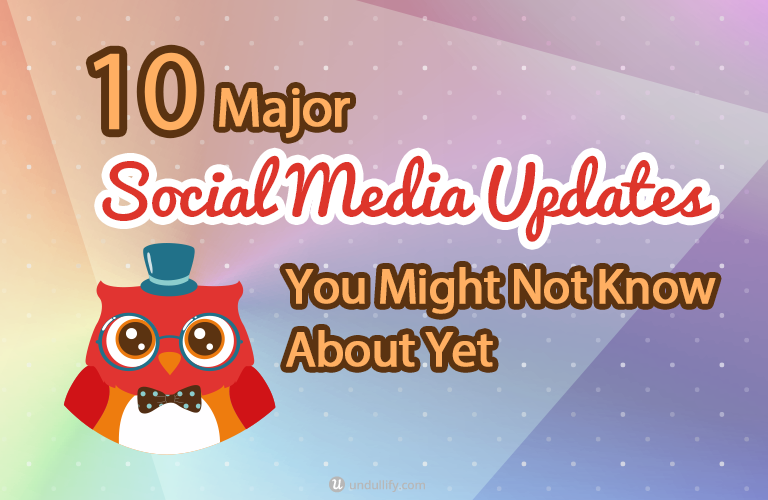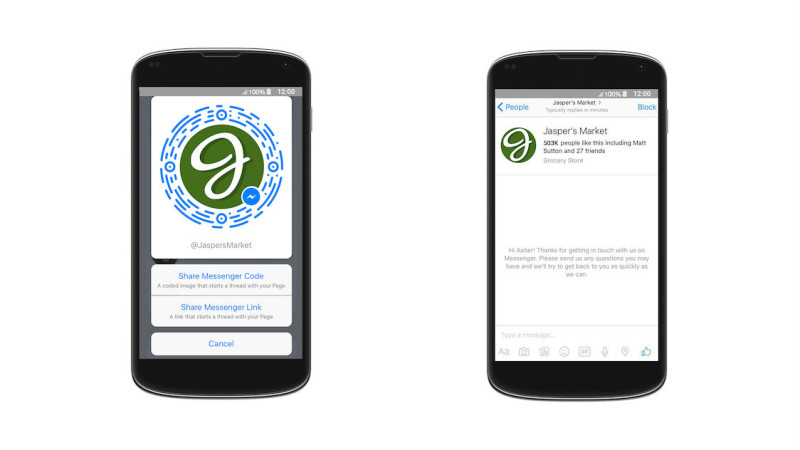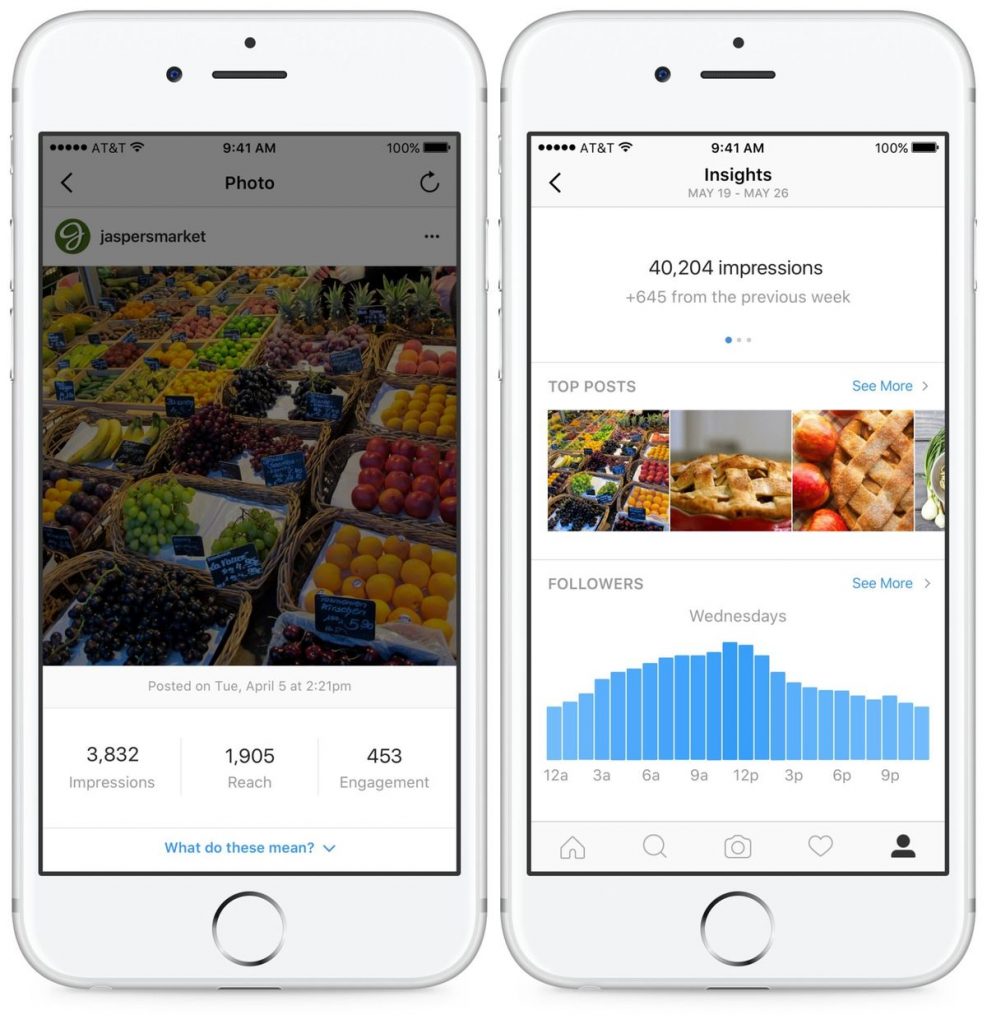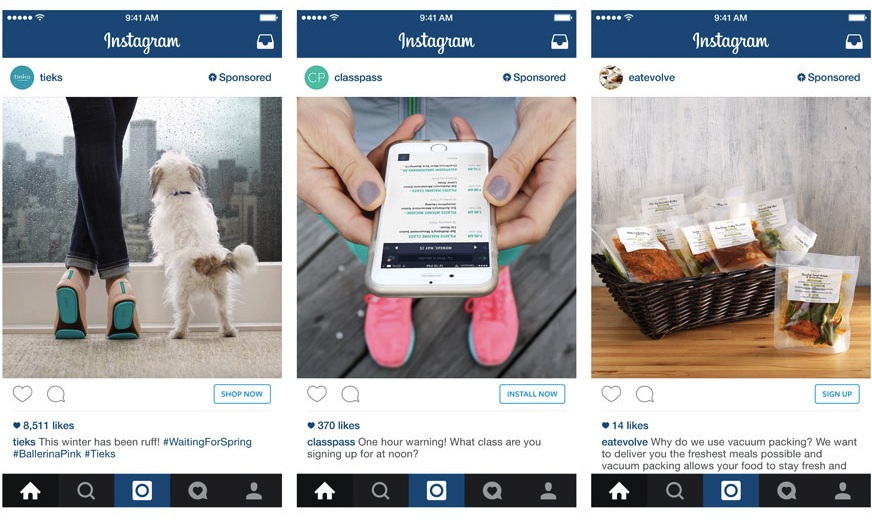10 Major Social Media Updates You Might Not Know About Yet
ADRIENNE WOLTER | 8 MAY 2016

Social media never stays the same for long.
As a user, you’ve probably noticed big changes to the platforms you prefer to use many times.
From a marketer’s perspective, somewhat behind the scenes, change comes even more rapidly. New promotional tools, ad types, and other business options become available all the time.
Sometimes, you might not even realize what great new features are even available to you.
With this update, we hope to make you aware of all the major recent updates, from algorithm changes to new tools and features, that might affect your social strategy.
Facebook Updates
Facebook reactions give users more ways to respond to posts.
The Like button is no longer the only way to react to a post on Facebook. Since late February 2016, users have been able to choose from five additional reactions: Love, Haha, Wow, Sad, and Angry.

Reactions are all weighted equally; a Love carries no more value than a Like, and the negative reactions do not count against your update. They simply diversify the ways users can engage with your content, and offer opportunities to react in cases where a Like might not make sense.
Facebook gives brands new ways to use Messenger.
There have been a lot of exciting changes to Messenger lately.
First, Facebook Messenger will be adding Snapchat-style QR codes for quickly scanning and connecting with other users and brands.

At their annual developers’ conference in March 2015, Facebook announced Messenger for Business, along with a suite of other interesting ways for brands to use Messenger. Facebook has built an AI personal assistant, similar to Siri, right into Messenger (and it’s pretty powerful!), and brands can also create their own Messenger robots. Of course, these features are only available right now in San Francisco, but it is Facebook’s hope to expand them to a broader base of users soon.
Twitter Updates
Twitter loosens some frustrating restrictions on the character count.
No, Twitter is not extending its classic 140-character restriction, but it is changing how certain elements count towards the total.
For one, media attachments will no longer count against the character count. This is a pretty big deal, as attached photos or videos used to take up 24 characters.
Usernames in replies will also no longer be counted against the total. Interestingly, Twitter is also changing the way @mentions at the start of a tweet will be visible on the network. Previously, starting a tweet with a @mention was one of the most common Twitter mistakes, and it would limit the visibility to users who follow both you and the user your tweet was directed at. Users would get around this problem by beginning a tweet with a period before the @mention. Now, these tweets will be seen by all your followers.
Links will still count against the character total.
Instagram Updates
Instagram rolls out a news feed algorithm.
Instagram has been rolling out updates and changes left and right, the biggest being the recent change to an algorithmic news feed, similar to Facebook. Instagram no longer shows all of the updates from all the people you follow in chronological order; now it shows you the content it thinks you are most likely to engage with.
This switch prioritizes user interaction, as the more people like and comment on your posts, the more those updates will be shown to other users. This is both good news and bad news for brands. Good news, in that you don’t need to post an inhuman amount to grow your follower base, and it rewards brilliant images; bad news (for some), in that there is no longer a tried and true way to earn a large following on mediocre content using the right combination of timing and hashtags.
Still, there are a lot of ways to earn a real Instagram following that work even despite the change on the news feed.
Instagram video now permits videos up to 60 seconds.
In late March, Instagram quietly announced that they were rolling out longer video content on Instagram. No longer confined to 15 seconds (which some people believed was a response to Vine’s six-second limit), users can now enjoy sharing up to 60 seconds of video.
This is great news for brands, who can now mesmerize their followers with up to a minute of video content. Tombow USA, an art supply company, uses that extra time to reveal the intricacies of hand lettering with their brush pens:
https://www.instagram.com/p/BGPwcH7wkz8/
Instagram debuts business accounts with analytics and better contact features.
Just a few days ago, Instagram announced that they plan to unveil new profiles and account tools for businesses. These new business accounts will have access to Instagram insights, an analytics tool very similar to Facebook insights.

Another small change (though the most highly visible to users) will be the addition of a small “Contact” button on Instagram profiles. This will make conversations with potential customers far simpler than attempting to follow comments threads on individual images.
Instagram allows brands to add CTAs to photo ads.
An Instagram update that has been in effect for about a year – but chances are, you don’t know about it, yet – are the call to action buttons that you can add to ads. These buttons add CTAs like “sign up” and “shop now” to your sponsored posts, making them more engaging and more likely to result in a website visit.

There is a lot of immediacy to these buttons. Normally on Instagram, if a user likes a product on their feed, they need to go digging to find the product on that brand’s site. Few users actually have the patience or motivation to do this. With the CTA button, they don’t need to – the product is just a click away.
Pinterest Updates
Pinterest rolls out a change to their algorithm.
Although it hasn’t been officially confirmed by Pinterest, there has been a lot of speculation that sometime between February and March 2016, Pinterest changed their algorithm.
The new update puts far less emphasis on pinners and more focus on popular pins and boards. The reason for this is that Pinterest wants to improve the experience for their users, and they’ve decided that, more than anything, their users want to see popular content.
Whether that is true or not, the most highly-repinned pins are more likely to make it onto your feed, even if they are a little older than the recent content that might otherwise appear there. In addition, instead of suggesting you follow the original pinner when you repin something, Pinterest is now suggesting you follow the original board they pinned it on. This is because a pinner might have a wide variety of content, but you might only really be interested in the kind of pins that fill that one board.
To deal with the new changes, it is important to focus on curating specific verticals with your boards. Instead of creating catch-all, super broad boards like “Recipes,” make more specific boards, like “Quick & Easy Recipes” or “Summertime Dinner Recipes.”
Pinterest lets affiliate links back in.
Years ago, Pinterest banned affiliate links in pins. This was because of poor spam controls, and pins that sometimes led to dangerous sites. After the ban, Pinterest would strip affiliate code out of URLs, sometimes rendering pin links useless.
At the start of May 2016, Pinterest quietly let affiliate links back in. Among other reasons, this is to offer some reward to power users who pin lots of incredible content but aren’t benefiting directly from the social platform. Marketers can now use this as an opportunity to have power users pin their content by offering them monetary compensation through affiliate links.
LinkedIn Updates
LinkedIn unveils audience match ad targeting.
Several networks have “custom audiences” ad targeting, which is a method of pointing your ads at certain users by providing a list of identifying information for those users, typically an email list. Facebook calls them Custom Audiences, and Twitter calls them Tailored Audiences. As of March 2016, LinkedIn is the new kid on the block with audience match, a tool where brands can upload a list of companies, and LinkedIn will target their employees.
There are lots of potential uses for this kind of tool, and it particularly hits its stride in B2B. Say your company really wants to work with company X. You can use LinkedIn to do the hard work of tracking down their employees, then target them with the ads you want them to see.
Wrapping Up
Obviously, there have been a lot more changes in the social media world than just these ten major updates to Facebook, Twitter, Instagram, Pinterest, and LinkedIn. However, these are the big updates that could really help you push the needle when you work them into your social media strategy.
What other updates are proving useful or to be a major frustration in your social strategy? Share those ups and downs in the comments below!

